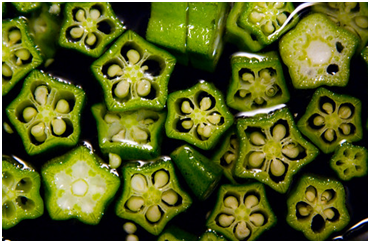Which of the following plants is used to extract the blue dye?
1. Trifolium
2. Indigofera
3. Lupin
4. Cassia
1. Trifolium
2. Indigofera
3. Lupin
4. Cassia

To unlock all the explanations of 38 chapters you need to be enrolled in MasterClass Course.

To unlock all the explanations of 38 chapters you need to be enrolled in MasterClass Course.
Match the followings and choose the correct option :
| Group A | Group B | ||
| A. | Aleurone layer | i. | without fertilization |
| B. | Parthenocarpic fruit | ii. | Nutrition |
| C. | Ovule | iii. | Double fertilization |
| D. | Endosperm | iv. | Seed |
Options:
| A | B | C | D | |
| 1. | i | ii | iii | iv |
| 2. | ii | i | iv | iii |
| 3. | iv | ii | i | iii |
| 4. | ii | iv | i | iii |

To unlock all the explanations of 38 chapters you need to be enrolled in MasterClass Course.

To unlock all the explanations of 38 chapters you need to be enrolled in MasterClass Course.
The inflorescence shown in the given figure is:
1. Hypanthodium where A are male flowers and B are female flowers
2. Hypanthodium where A are female flowers and B are male flowers
3. Verticillaster where A are male flowers and B are female flowers
4. Verticillaster where A are female flowers and B are male flowers
The condition of stamens shown in the given picture is called:
| 1. Diadelphous | 2. Polyadelphous |
| 3. Syngenesious | 4. Synandrous |
Match each item in COLUMN I with one in COLUMN II and select the correct answer from the codes given:
|
|
COLUMN I [Cohesion of stamen] |
|
COLUMN II [Example] |
|
A. |
Monadelphoyus |
a. |
Sunflower |
|
B. |
Diadelphous |
b. |
China rose |
|
C. |
Syngenesious |
c. |
Cucurbits |
|
D. |
Synandrous |
d. |
Pea |
Codes
A B C D
1. b c d a
2. b d a c
3. c b a d
4. d c b a
Look at the dorsifixed condition of stamens in the given picture. This can also be seen in flowers of:

1. Mustard
2. Michelia
3. Passion flower
4. Salvia
What is the type of placentation seen in the given picture?

1. Marginal
2. Axile
3. Parietal
4. Basal
Identify the inflorescence:
| 1. | Raceme | 2. | Spike |
| 3. | Spikelet | 4. | Catkin |

To unlock all the explanations of 38 chapters you need to be enrolled in MasterClass Course.

To unlock all the explanations of 38 chapters you need to be enrolled in MasterClass Course.
Match each item in COLUMN I with one in COLUMN II and select the correct answer from the codes given:
|
|
COLUMN I [Racemose inflorescence] |
|
COLUMN II [Example] |
|
A. |
Spadix |
a. |
Wild coriander |
|
B. |
Corymb |
b. |
Sunflower |
|
C. |
Umbel |
c. |
Aroids |
|
D. |
Head/capitulum |
d. |
Candytuft |
Codes
A B C D
1. a b c d
2. b a d c
3. c d a b
4. d c b a
The given picture shows the stem modification in Asparagus racemosus. This is called as:
| 1. Phylloclade 2. Cladode 3. Phyllode 4. Bulbil |
 |









